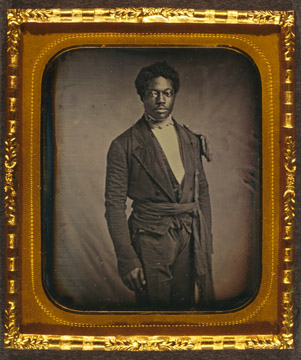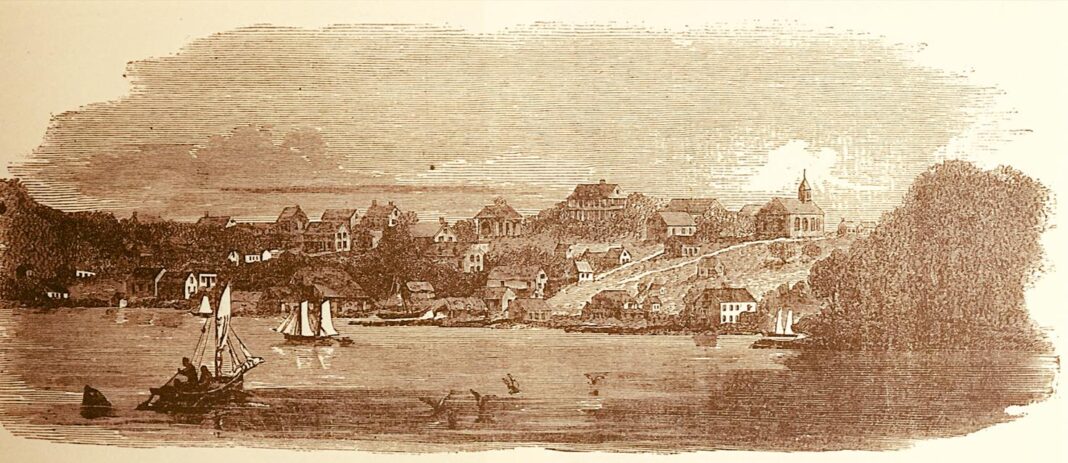The City of Trenton is the birthplace of innovators. Amongst our most storied historical figures is Augustus Washington, a man with a career so vast, he cannot possibly be defined by any one category. Although he was born here in Trenton, Washington would bring his expertise and talent all across the globe. The life of Augustus Washington is an incredible tale and the perfect figure to celebrate this Black History Month.
Augustus Washington was a photographer and one of the few documented African-American daguerreotypists of the 1800s. Washington was born in Trenton, NJ, in 1820. He was the son of a formerly enslaved person, and his mother was said to be of South Asian descent. Regretfully, his mother passed away when he was a child. As Washington grew older, he received an education at various notable institutions, including the Oneida Institute, a national leader in the abolitionist movement, and the Kimball Union Academy. In his collegiate years, Washington would go on to attend the prestigious Dartmouth University. To finance his education, Washington took on the craft of creating daguerreotypes, ultimately changing his life in the process.
Although Washington ultimately had to leave Dartmouth due to financial struggles, his newfound skills as a daguerreotypist catalyzed a fruitful new career. Washington moved to Hartford, Connecticut. In Hartford, Washington worked as a teacher for Black students and would ultimately go on to open a Daguerrean studio in 1846. He lived and worked in Hartford until 1852 when Washington relocated to Liberia. Washington was a fierce advocate for the abolitionist movement and felt repatriation was the best option for African-Americans. As a result, Washington was among thousands of African-Americans who set off to Africa to start a free Black nation. It took Washington over a year to raise funds, but in 1853, Washington, his wife Cordelia, and their two small children were officially residents of Liberia.

Once settled in Liberia, Washington continued his Daguerrean work and set up shop in the Liberian capital of Monrovia. Washington was prosperous in Liberia and would even create daguerreotypes for Liberian legislators and executives. However, Washington’s entrepreneurial spirit persisted, and he quickly established himself as a successful merchant, landlord, and photographer. As a well-respected community member, Washington would ultimately find himself nestled in Liberia’s political sphere, beginning another exciting phase of life.
Amidst his various successful business ventures, Washington also managed to find time to serve in Liberia’s legislature. Throughout his time in politics, Washington was a member of Liberia’s Senate and their House of Representatives. He also had the honor of serving as Speaker of the House from 1865-1869. During his time in office, he continued to fight for progress in his beloved Liberia. Washington was also a key advocate for agriculture in the region, boasting a 1,000-acre farm twenty miles from Monrovia. What was evident throughout Washington’s life was where he led; success would inevitably follow.
Augustus Washington passed away in Monrovia in 1875. Upon his passing, it was evident that the loss struck his community in Liberia. The African Repository noted, “Nothing could induce him to return to this country [America], having acquired a handsome property and freedom and a home in his ancestral land.” Although Washington has his roots in Trenton and made his home in Liberia, his legacy serves as an inspiration to individuals all across the globe. From working as daguerreotypists to his days in the legislature, we can all learn a lesson from the tenacity and talents of Augustus Washington.

SOURCES:
- https://blogs.loc.gov/picturethis/2013/02/augustus-washington-daguerreotypist/
- https://npg.si.edu/exh/awash/awintro.htm
- https://trentonhistory.org/wp-content/uploads/Trentons-African-American-History-Manual-2015.pdf





